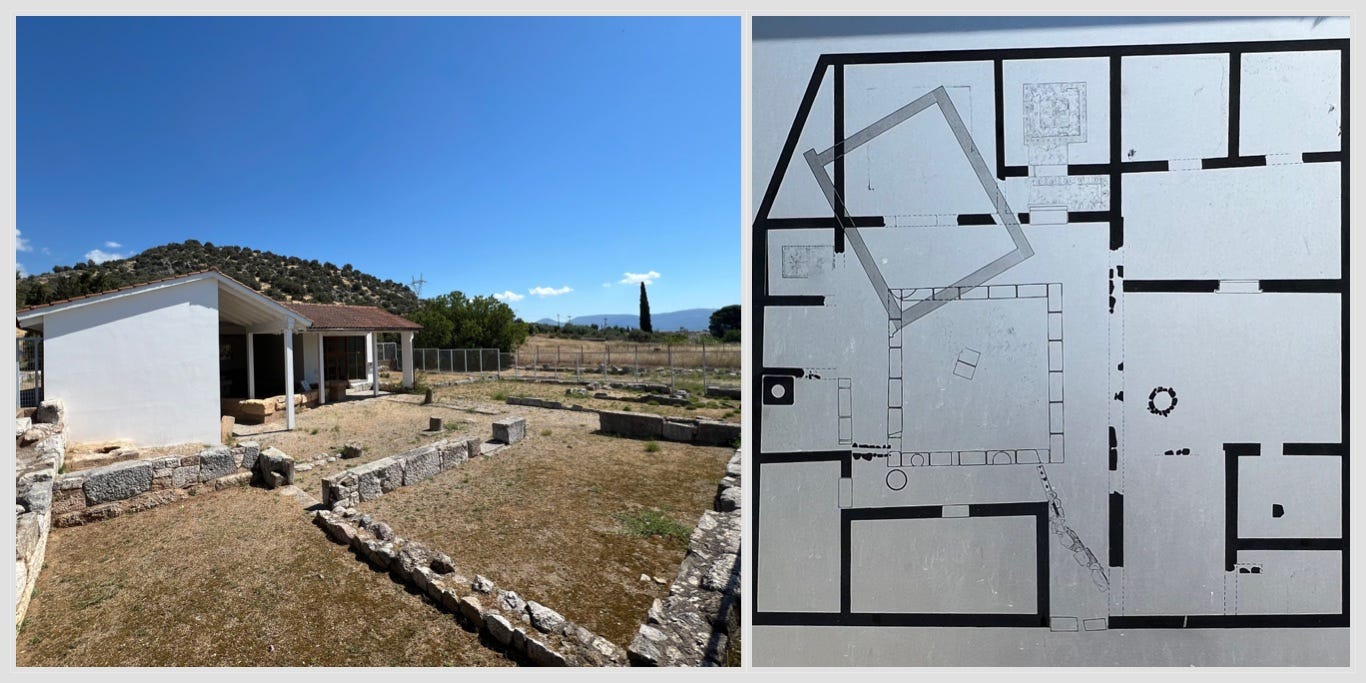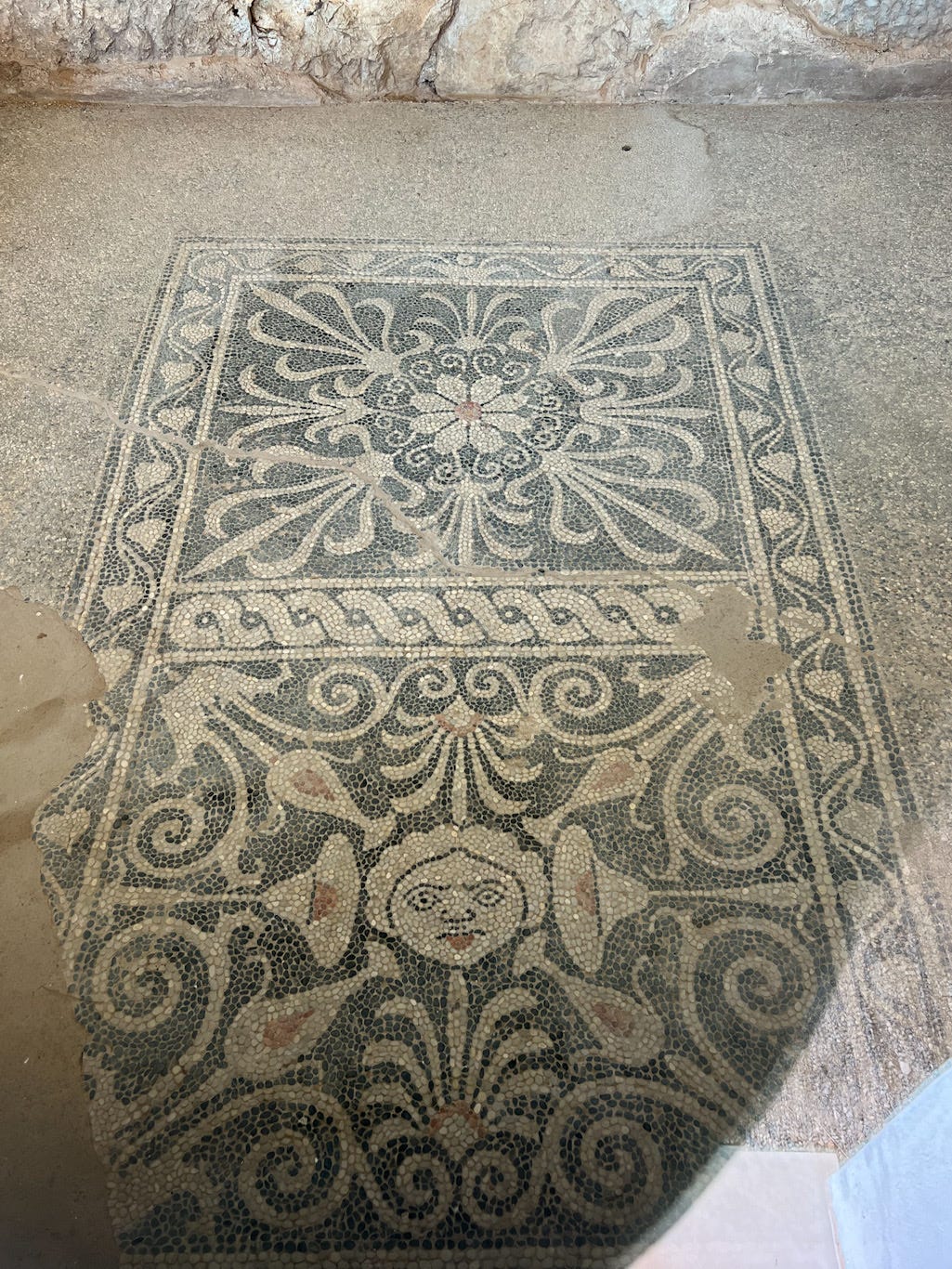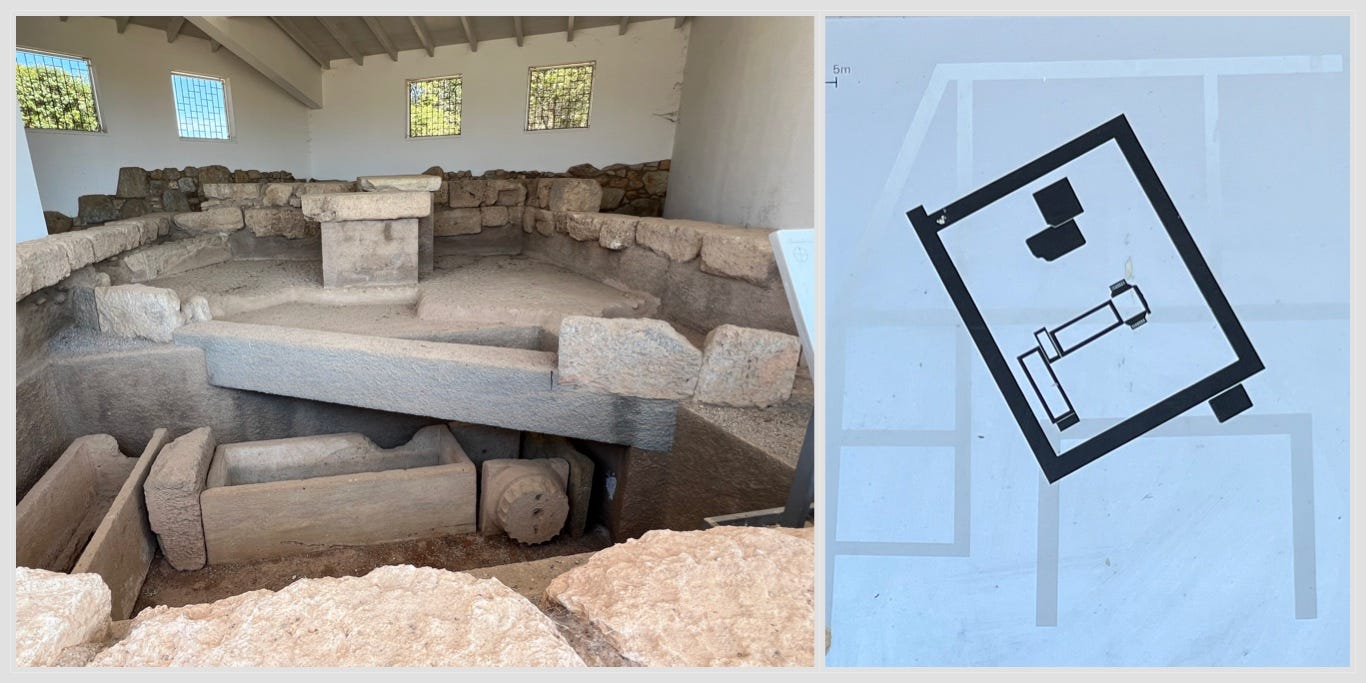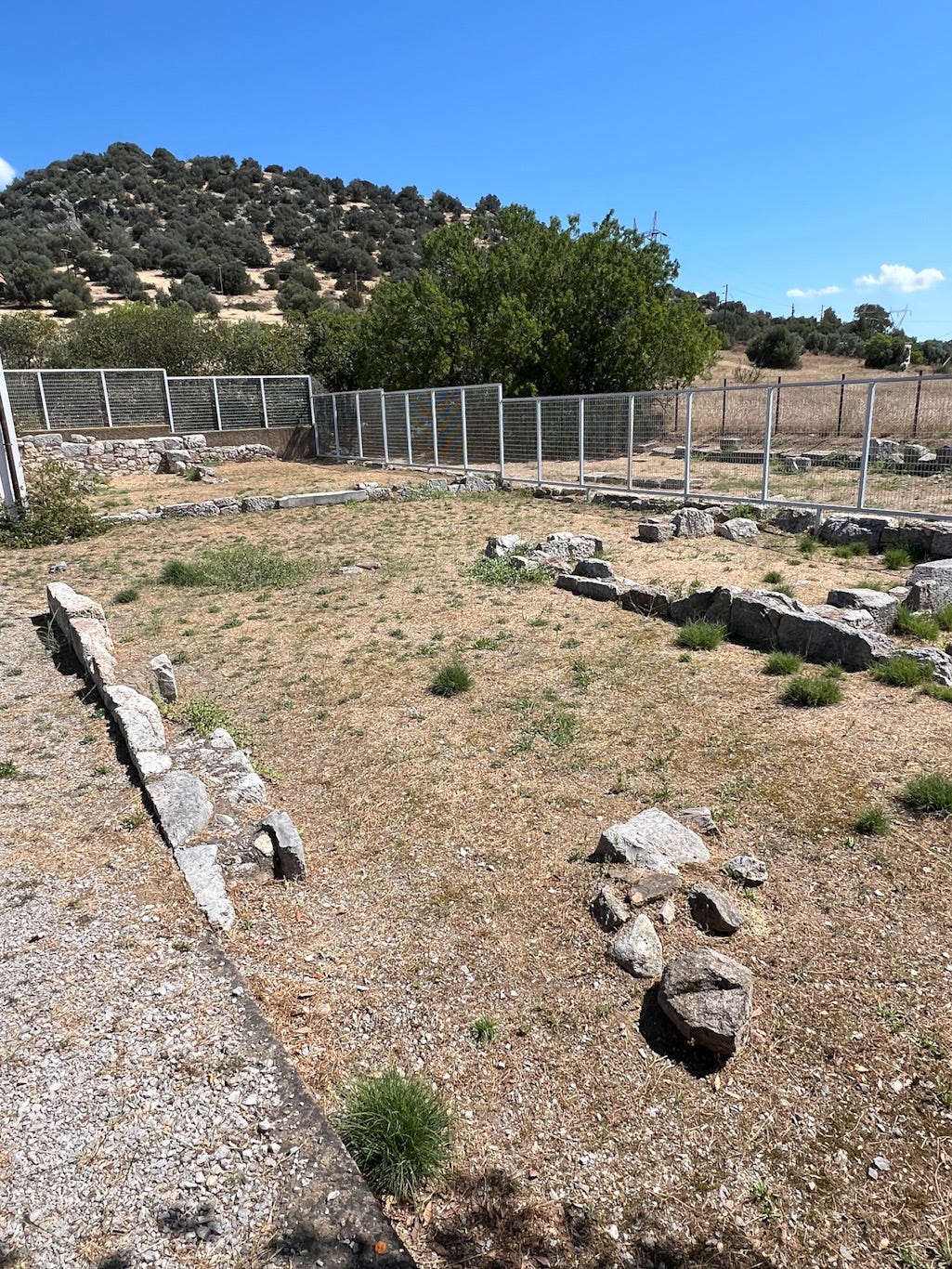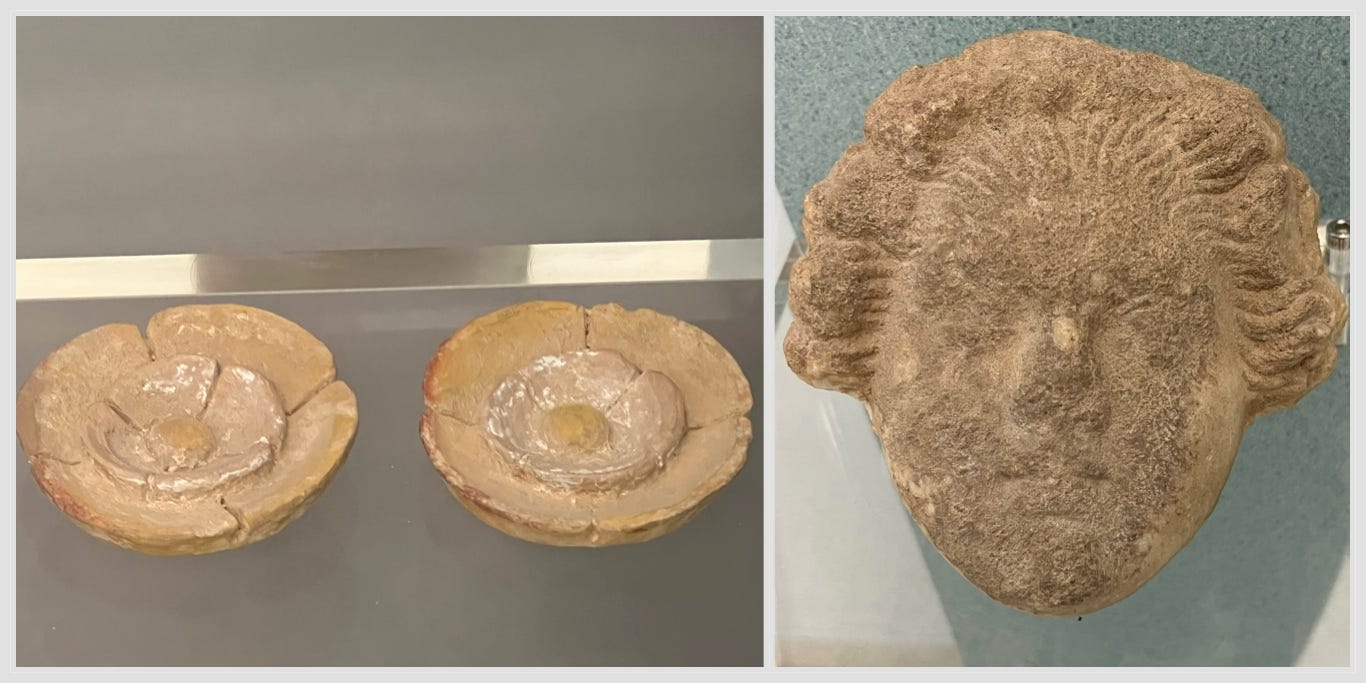Echoes of Pausanias: House of Mosaics, Eretria (Evvia, Greece)
Come with me to visit ancient Eretria on the island of Evvia (Euboea), Greece, starting with the amazing House of Mosaics.
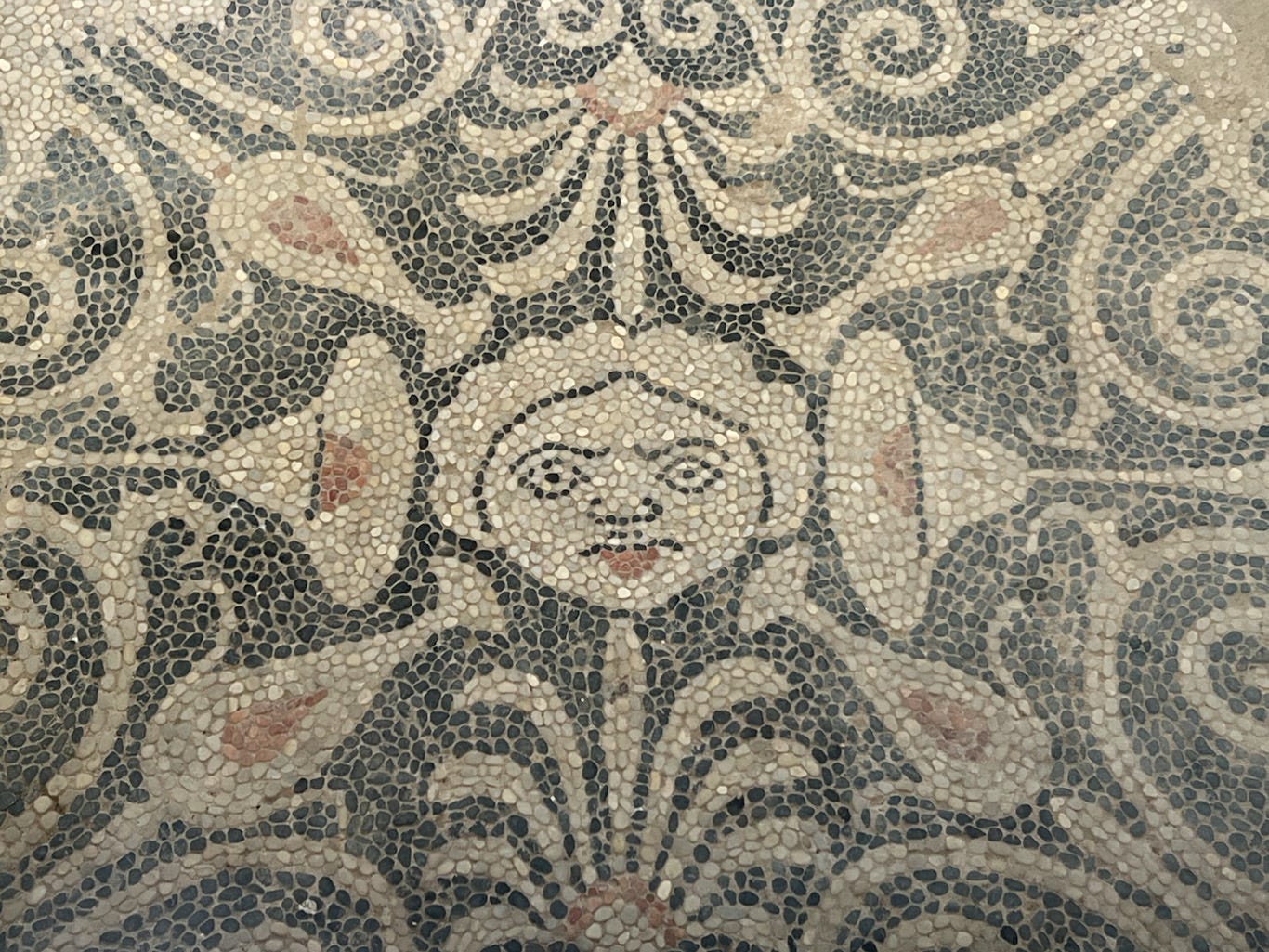
New Theme (Series)
Setting up another new theme: discovering archaeological sites is typically a major focus of my travel; writing about that for me carries echoes of Pausanias. A Greek traveller and geographer (c. 110 - 180 CE), Pausanias was famous for his Description of Greece - a record of his travels around Greece. His accounts are how we know many of the details of various monuments, statues, sacred spaces and the related history and myths. So you can expect some detailed descriptions of sites under the Echoes of Pausanias theme.
Eretria, Evvia (Euboea), Greece
Eretria was an important ancient Greek city, particularly in the 6th and 5th centuries BCE. The old town feels a bit like one big archaeological site, with major sites of interest encompassing large swaths of the town and quite a good little museum. One particularly interesting site is the House of Mosaics.
House of Mosaics
Built c. 370 BCE, the House of Mosaics was a typical Hellenistic Eretrian house - almost square and divided into two parts, public and private, each around a central courtyard. It was large and luxurious, a single story with stone foundations, a tiled roof and brick walls covered with grey, blue, red and yellow plaster. It clearly belonged to an elite figure, possibly the philosopher and politician Menedemos (345/44 - 261/60 BCE). It was in the important North Quarter of the city: on the axes of the two main roads of the city (east-west and north-south).
A number of 4th century BCE pebble mosaics were found there (hence the name); two sets remain on site, protected by a modern pavilion built around the main public rooms (although a bit hard to see through extremely dirty windows), which also gives a sense of the height and style of the house. It was destroyed c. 270 BCE and excavated by the Swiss School of Archaeology in Greece between 1972-80.
The On-Site Mosaics
A banquet room (andron) has the most impressive mosaics: in a vestibule, entered from the courtyard over a marble threshold, is a scene with two sets of sphinxes facing panthers. The andron itself is encircled by a sill along the walls and is estimated to fit seven couches. At the entrance is a mosaic with a nereid riding a seahorse (possibly Thetis bringing shield and spear to Achilles). In the middle of the room is a square mosaic with a 16-point star in the centre, surrounded by volutes and lotus flowers. On the sides are four scenes: two with a battle between one-eyed female Arimaspeans and griffins (as described by Herodotus; with Phrygian hat and Thracian garb as seen in 4th century BCE vase painting); two with lions attacking horses. Special care was obviously taken when cleaning the mosaics - the threshold has a small conduit to carry off the water when the room was being cleaned.
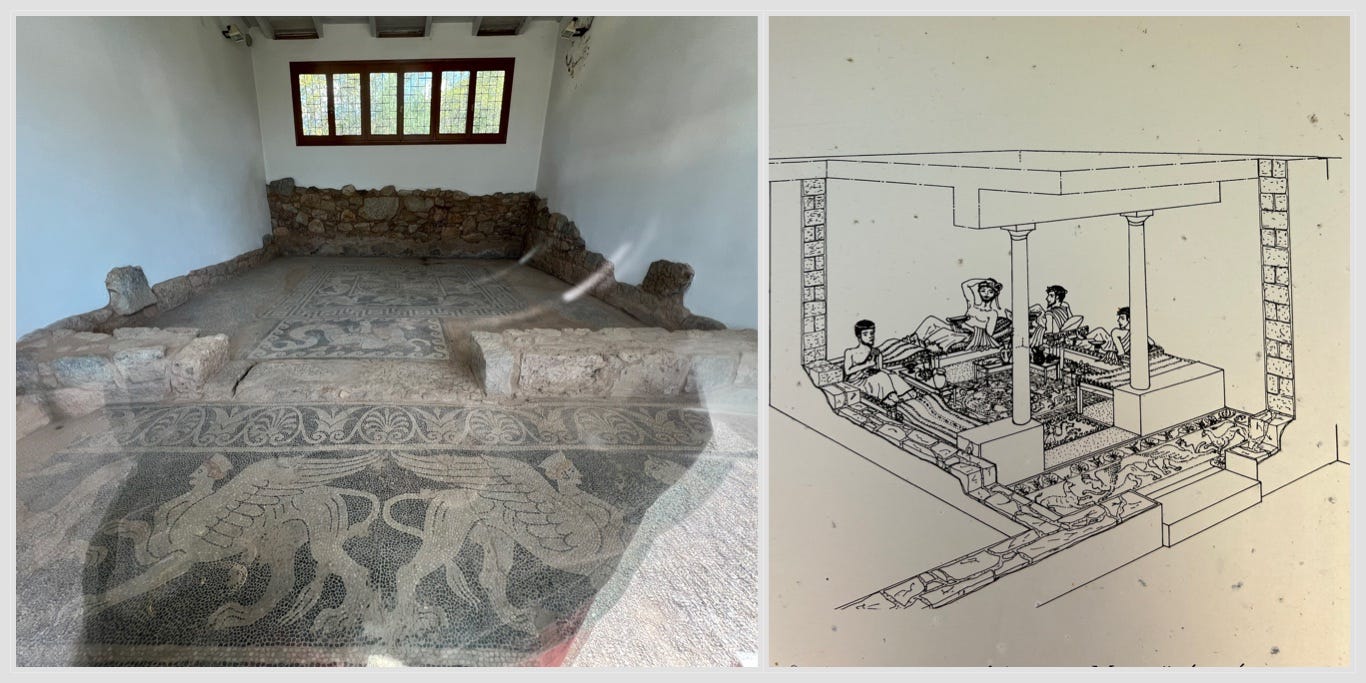
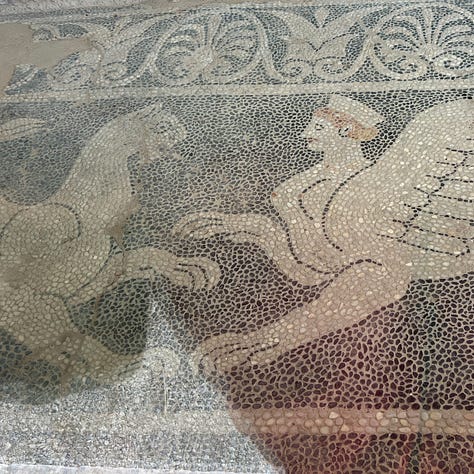

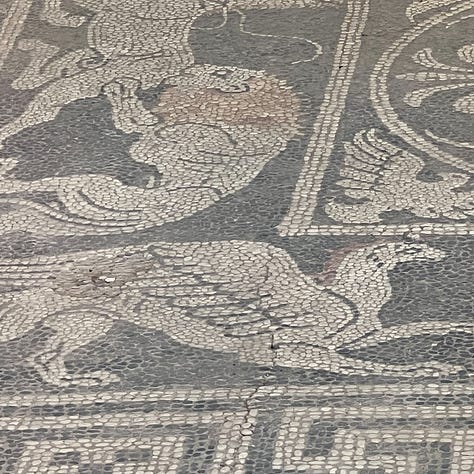
Another smaller andron would have held three couches; it has two rectangular mosaics surrounded by ivy leaves: a gorgon's head and an eight-petal rosette, each with floral decoration.
Another Banquet Room, Later Topped by a 1st Century BCE Tomb
Another banquet room (andron) sat between these two banquet rooms. Two significant pieces were found in this room: a terracotta gorgoneion (gorgon's head; ME 16583) and a coiled snake (ME 16584). They both would have been part of the décor and date to 370-300 BCE.
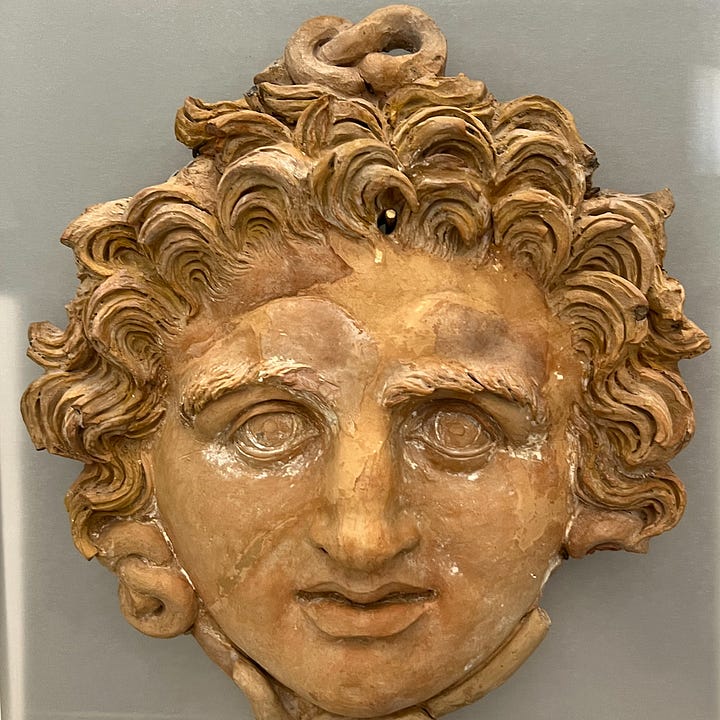

Later, in the 1st cent. BCE, a monumental tomb was built on top of it, a rectangular enclosure oriented diagonally - for the most part, that’s what is visible today. Two sarcophagi were found, one with the burial of a youth. These were plundered in antiquity and only ceramic vases remained, plus the remains of a funeral banquet - fish and meat - in a pit nearby. Two Doric columns were also found, transported there from some other monument in the city.
Peristyle Public Courtyard
Waterspouts with lion-headed gargoyles collected rainwater from the roof of the stoa of the public-side peristyle courtyard and channeled it into a conduit in the southeast corner of the courtyard. The courtyard had three unfluted columns on each side, a pebble mosaic and an altar to Zeus Herkeios in the centre (only the foundations were preserved). On the southwest side were several other rooms, including one with a well and one with a pebble mosaic floor in which an lead relief depicting a winged Nike holding a trophy and a wreath (ME 10282) was found.
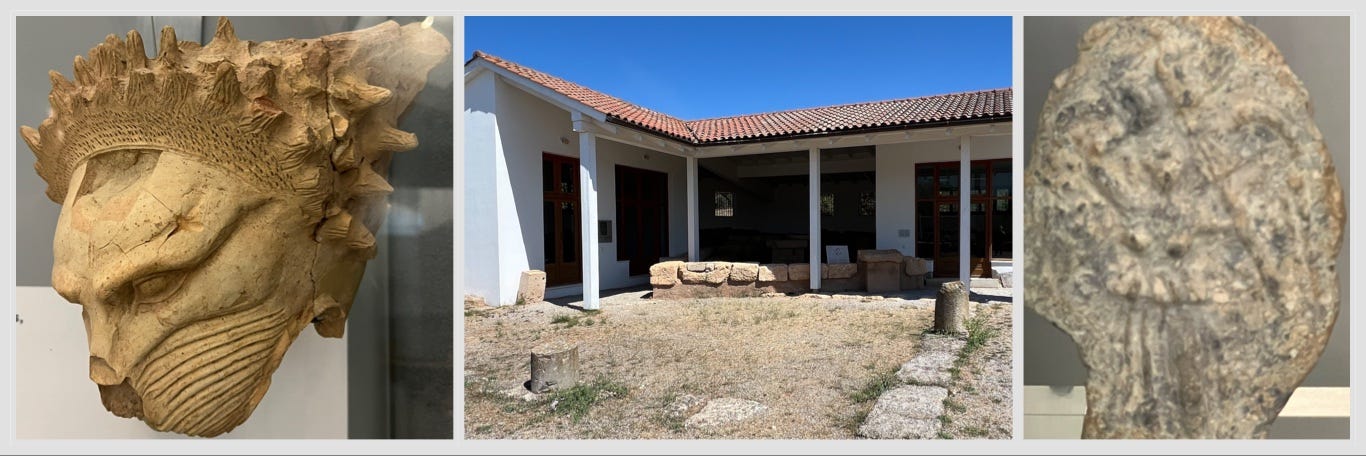
Private Side of House
The private part of the house, to the east, includes the bedrooms, the kitchen and the bathroom, built around a courtyard-garden, which also had a well.
Other Artifacts
Other artifacts found at the site include clay rosettes with applied paint (ME 16586-87), likely attached to a vessel of some kind, and a marble gorgoneion (ME 6630), an architectural detail.
Sources: Materials from House of Mosaics site and Archaeological Museum of Eretria (by Swiss School of Archaeology in Greece and the Euphorate of Antiquities of Euboea); Efi Sapouna Sakellaraki, Eretria: Site and Museum (2nd Ed., Archaeological Receipts Fund, 2000).
There are several related posts on Instagram (from late July 2024), which you can check out here: Instagram. And if you liked this post, I’d be grateful if you would share it with others.



